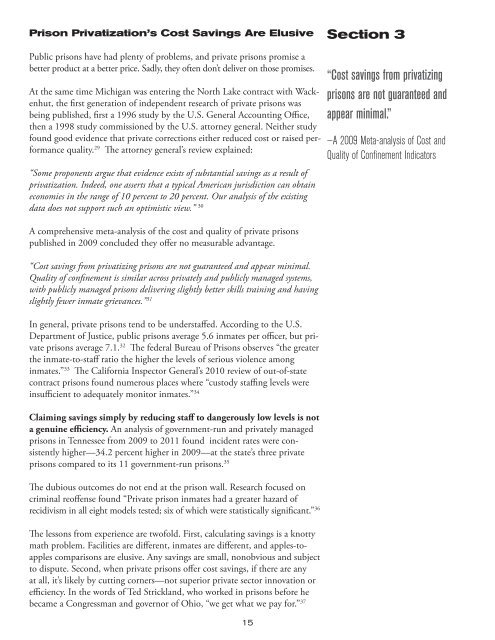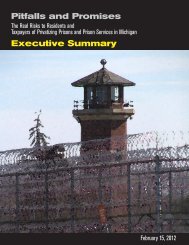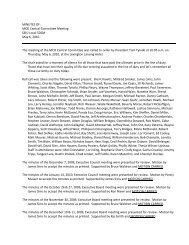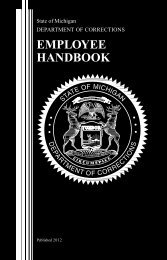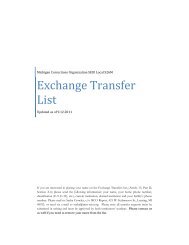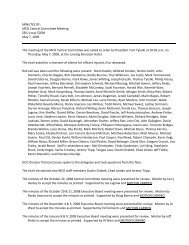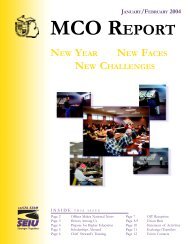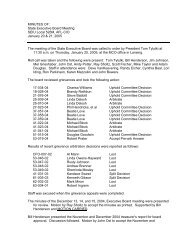Pitfalls and Promises - Michigan Corrections Organization
Pitfalls and Promises - Michigan Corrections Organization
Pitfalls and Promises - Michigan Corrections Organization
You also want an ePaper? Increase the reach of your titles
YUMPU automatically turns print PDFs into web optimized ePapers that Google loves.
Prison Privatization’s Cost Savings Are ElusiveSection 3Public prisons have had plenty of problems, <strong>and</strong> private prisons promise abetter product at a better price. Sadly, they often don’t deliver on those promises.At the same time <strong>Michigan</strong> was entering the North Lake contract with Wackenhut,the first generation of independent research of private prisons wasbeing published, first a 1996 study by the U.S. General Accounting Office,then a 1998 study commissioned by the U.S. attorney general. Neither studyfound good evidence that private corrections either reduced cost or raised performancequality. 29 The attorney general’s review explained:“Some proponents argue that evidence exists of substantial savings as a result ofprivatization. Indeed, one asserts that a typical American jurisdiction can obtaineconomies in the range of 10 percent to 20 percent. Our analysis of the existingdata does not support such an optimistic view.” 30A comprehensive meta-analysis of the cost <strong>and</strong> quality of private prisonspublished in 2009 concluded they offer no measurable advantage.“Cost savings from privatizing prisons are not guaranteed <strong>and</strong> appear minimal.Quality of confinement is similar across privately <strong>and</strong> publicly managed systems,with publicly managed prisons delivering slightly better skills training <strong>and</strong> havingslightly fewer inmate grievances.” 31In general, private prisons tend to be understaffed. According to the U.S.Department of Justice, public prisons average 5.6 inmates per officer, but privateprisons average 7.1. 32 The federal Bureau of Prisons observes “the greaterthe inmate-to-staff ratio the higher the levels of serious violence amonginmates.” 33 The California Inspector General’s 2010 review of out-of-statecontract prisons found numerous places where “custody staffing levels wereinsufficient to adequately monitor inmates.” 34Claiming savings simply by reducing staff to dangerously low levels is nota genuine efficiency. An analysis of government-run <strong>and</strong> privately managedprisons in Tennessee from 2009 to 2011 found incident rates were consistentlyhigher—34.2 percent higher in 2009—at the state’s three privateprisons compared to its 11 government-run prisons. 35The dubious outcomes do not end at the prison wall. Research focused oncriminal reoffense found “Private prison inmates had a greater hazard ofrecidivism in all eight models tested; six of which were statistically significant.” 36The lessons from experience are twofold. First, calculating savings is a knottymath problem. Facilities are different, inmates are different, <strong>and</strong> apples-toapplescomparisons are elusive. Any savings are small, nonobvious <strong>and</strong> subjectto dispute. Second, when private prisons offer cost savings, if there are anyat all, it’s likely by cutting corners—not superior private sector innovation orefficiency. In the words of Ted Strickl<strong>and</strong>, who worked in prisons before hebecame a Congressman <strong>and</strong> governor of Ohio, “we get what we pay for.” 3715“Cost savings from privatizingprisons are not guaranteed <strong>and</strong>appear minimal.”—A 2009 Meta-analysis of Cost <strong>and</strong>Quality of Confinement Indicators


